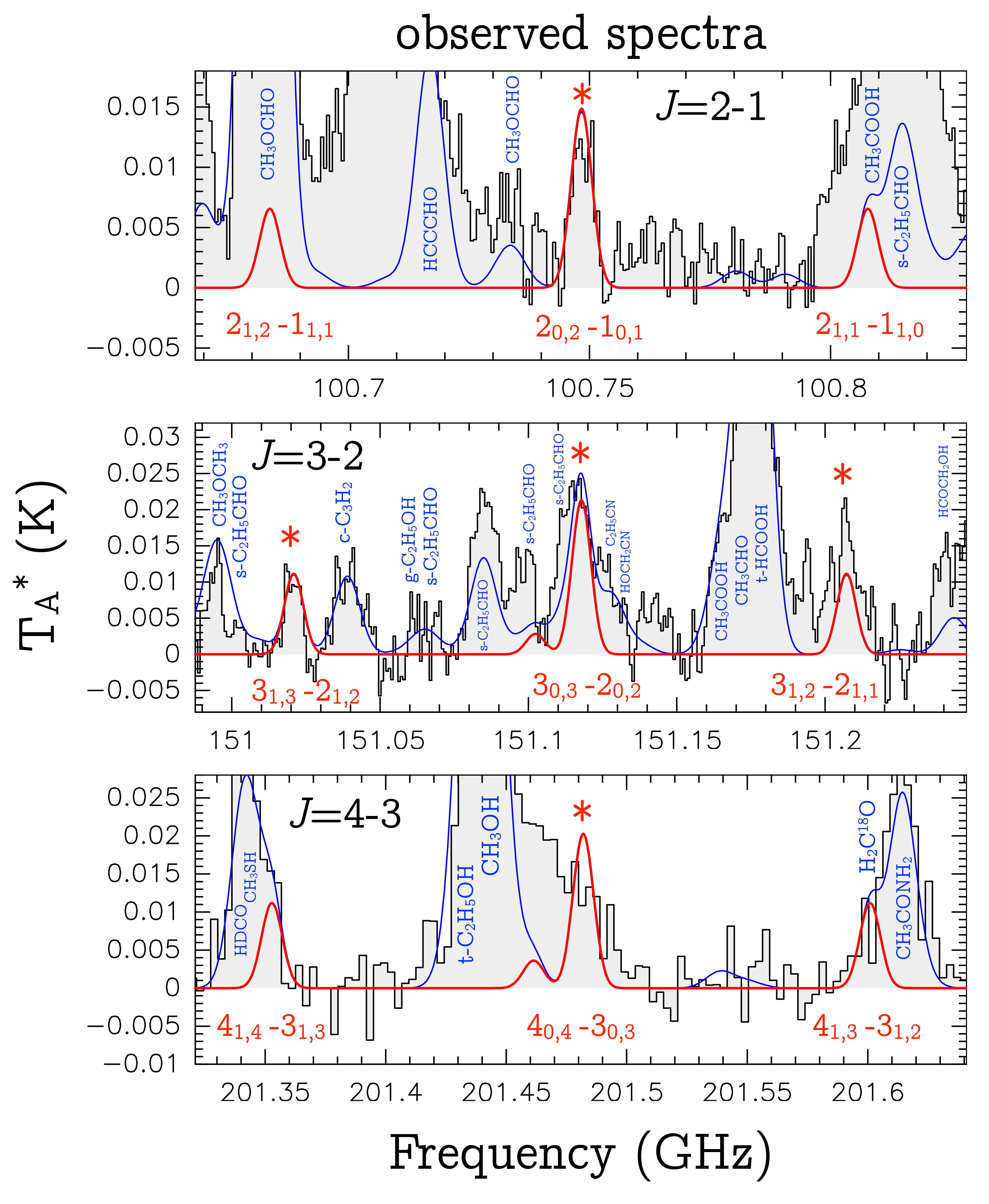News
IRAM 30-meter telescope detects a possible precursor of biological RNA
Using the IRAM 30-meter telescope, a group of astronomers led by Víctor M. Rivilla detected for the first time the molecule hydroxylamine (NH2OH) towards the molecular cloud G+0.693-0.027, located in the center of our Galaxy. This molecular species has been intensively searched in the last years due to its importance in prebiotic chemistry. Hydroxylamine is considered an essential ingredient for the origins of life on Earth, and a key precursor of ribonucleic acid (RNA), a molecule that plays various biological roles in coding, decoding, regulation and expression of genes. The discovery has been published in The Astrophysical Journal Letters.
 |
| Discovery of hydroxylamine (NH2OH), considered one of the essential building blocks of RNA ribonucleotides, towards the molecular cloud G+0.693-0.027. The background image was obtained with the Spitzer space telescope. Credits: Nasa Spitzer Space Telescope, camera IRAC4 (8 micron) / Ben Mills / PinClipart.com / Víctor M. Rivilla (Centro de Astrobiología de Madrid, INTA-CSIC). |
Astrochemists had been searching for it for years. Thanks to deep observations carried out with the IRAM 30-meter telescope, its presence in the interstellar medium could now be confirmed. This relatively simple molecule with only five atoms is very special as it is considered one of the basic ingredients of RNA, a key molecule in the development of life on Earth.
Life was originated on Earth 3.8 million years ago, but the process that made it possible is still poorly understood. One of the greatest challenges is to resolve the following egg-and-chicken problem: the DNA nucleic acids use proteins to replicate, but the synthesis of proteins needs the information contained in the nucleic acids. To solve this paradox, scientists have proposed that life started in an RNA world, in which the ribonucleic acid (RNA) could have performed the functions that nowadays are carried out by DNA and proteins. To understand the origin of life it is therefore necessary to investigate how the first RNA building blocks, called ribonucleotides, may have been formed. In fact, recent experiments of prebiotic chemistry (the chemistry that gave rise to the first living organisms in our planet), indicate that, under conditions similar to those of the young Earth, RNA ribonucleotides could have been formed from much simpler molecules. One of them is indeed NH2OH, hydroxilamine, which is why it has become one of the most sought-after molecules in space.
 |
| Transitions of NH2OH detected (indicated with the red curve) towards the molecular cloud G+0.693-0.027, using observations carried out with the IRAM 30-meter telescope. |
“We are very excited about this finding, because this molecule has been very elusive in the last years”, stated Rivilla, the lead author of this work. “However, thanks to the IRAM 30-meter telescope we have finally detected it!”. The discovery of hydroxylamine confirms that it can be efficiently formed through cold interstellar chemistry in molecular clouds. “The chemical content of molecular clouds can be inherited through the formation process of new stars and planetary systems”, comments Jesús Martín-Pintado, a coauthor of the work. “This could be the way in which essential ingredients for life, such as hydroxylamine, arrived on young Earth”. The discovery has also important implications for possible presence of life on other planets. “We know now that building blocks of RNA ribonucleotides are present in other regions of the Galaxy, which increases the possibility of other planets existing with this chemical reservoir. If the conditions on such planets are favourable, this prebiotic material could be one of the key components for the great jump from chemistry to biology, from simple inert molecules to the first living organisms”, concludes Rivilla.
The discovery of hydroxylamine confirms that interstellar chemistry is able to build-up in space the simplest precursors of biomolecules. The challenge for coming years will be the detection of new molecular species with increasing molecular complexity and astrobiological interest. Astrochemists will attempt to estimate the richness of molecular complexity in the interstellar medium, and how this precious chemical reservoir can be transferred from native molecular clouds to new planetary systems.
More info:
▪ The Astrophysical Journal Letters: “Prebiotic Precursors of the Primordial RNA World in Space: Detection of NH2OH“, Víctor M. Rivilla, Jesús Martín-Pintado, Izaskun Jiménez-Serra, Sergio Martín, Lucas F. Rodríguez-Almeida, Miguel A. Requena-Torres, Fernando Rico-Villas, Shaoshan Zeng and Carlos Briones
Contact:
Victor M. Rivilla, Atracción de Talento CAM Senior Fellow. Centro de Astrobiología, CSIC-INTA, Madrid (Spain) & Associated researcher to INAF-Osservatorio Astrofisico di Arcetri, Florence (Italy)



